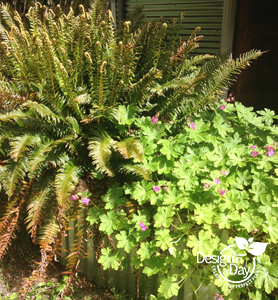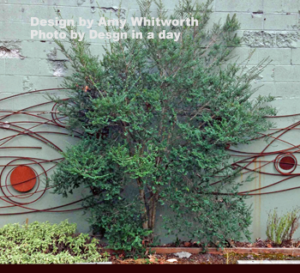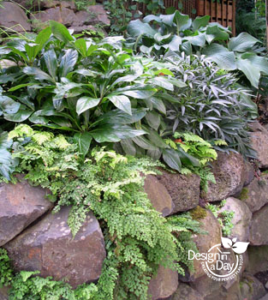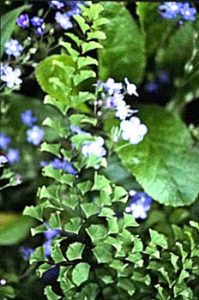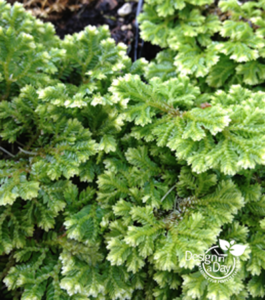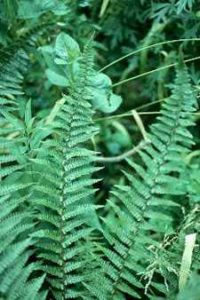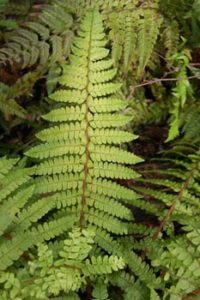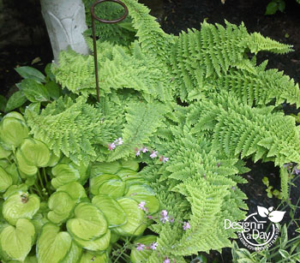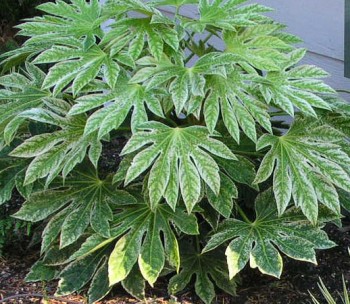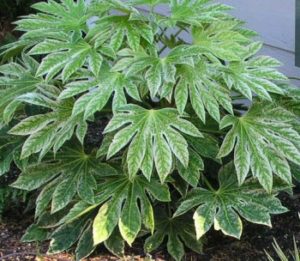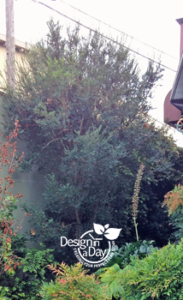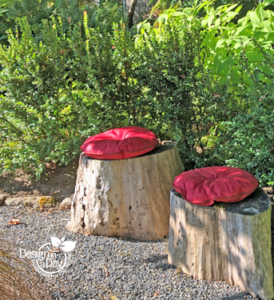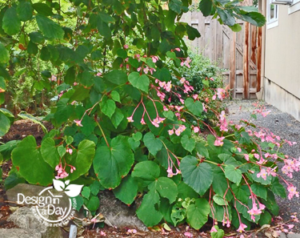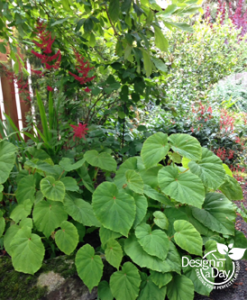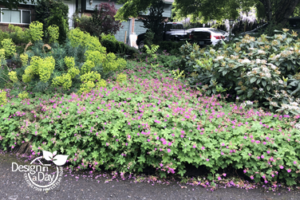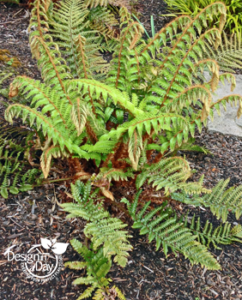Planting Under Mature Trees in Portland Landscapes
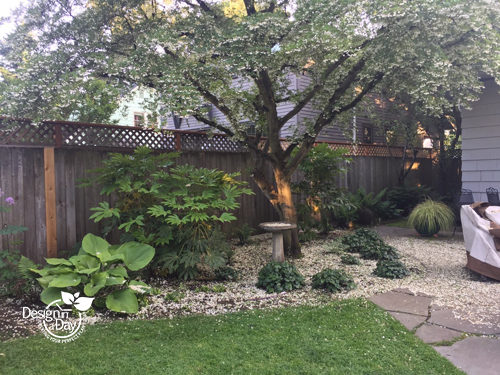
Fatsia Japonica, Beesia and Hosta thrive under Japanese Snowbell Tree in NE Portland.
A designer pal of mine asked for some help with selecting plants to grow under large mature trees. Here is what I have learned over many years. Also a thank you to Bruce Hegna (Nature Nurture Landscape Design) for his contributions to the list and Stacey Stewart, Eden’s Gate Garden Design.
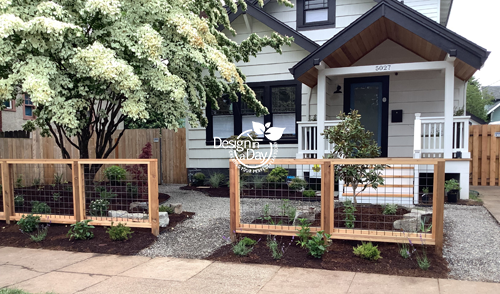
Low water plantings are installed under this mature dogwood (Cornus x ‘Venus’) in Concordia neighborhood front yard.
Carol’s rules for planting under big trees
- Do no harm to your big trees roots. Please don’t chop into them, bury them with additional soil or treat suckers with herbicides. They may see you coming but they cannot run away.
- Plants competing with mature tree roots will grow very slowly. Two or three times as slow as plants who do not have tree root competition. Patience is a requirement.
- Up close to the tree trunk where there are so many large woody roots is the hardest place to plant with success. Also, the size of root ball for your new plants will need to be smaller close in to the trunk so you don’t damage your trees roots. And yet….see #4
- A larger sized plant will establish with a higher percentage of success than the tiny sized plants. (Which isn’t fair but I did not make up these rules, nature did)
- When you discover a root where you want to put a plant try splitting the root ball of your new plant so the new plant is straddling the root. This can work surprisingly well in fall and winter, but not in the heat of July.
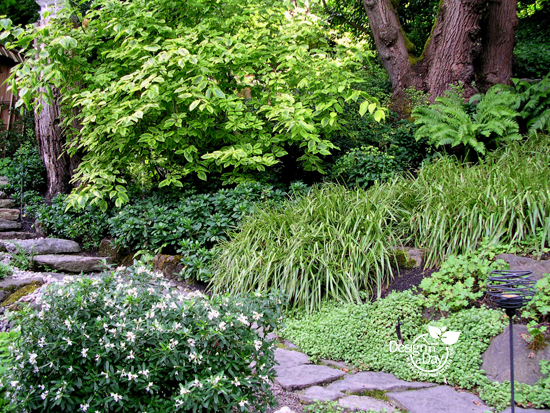
Plants thrive with morning sun only in hillside garden in NW Portland’s Willamette Heights neighborhood.
Plants to grow under mature trees
Morning sun and afternoon shade under deciduous trees
Under 3’ tall plants: Sword Fern,-Polystichum munitum, Bishops Hat-Epimendium ‘Sulpereum’ ‘Frohnleiten’, Hardy Geranium-Geranium Macrhorhizum,Creeping Oregon Grape-Mahonia repens, Hellebore, Hosta
Taller shrubs: Osmanthus, Japanese Aralia-Fatsia, Huckleberry- Vaccinium ovatum
Understory trees: Variegated Red Twig Dogwood Shrub- Cornus S. ‘Hedgerows Golden, ‘Vine Maple-Acer circinatum, Rhamnus Variegata, (Variegated Italian Buckthorn) Azara microphylla, Russian Olive. Eleagnus ebbingei ‘Gilt Edge’
Deep shade is the most difficult. It’s much easier to grow plants with some dappled light coming through deciduous trees (trees that lose their leaves in the fall). Here is a deep shade landscape of mine in Portland.
Plants to grow under limbed up fir trees
These plants are getting direct sun for part of the day
Plants Under 3’ Tall:
Mahonia repens (needs some shade), Sword Fern, Tellima grandiflora, (Fringe Cup), Ceanothus t. ‘Kurt Zadnik”, groundcover California Lilac, Abelia ‘Rose Creek’, cold hardy Hebe, a variety of hardy geranium groundcovers like Geranium x cantabriginense and more.
Taller plants: Corylus cornuta, (native hazelnut), Holodiscus discolor, (Ocean Spray), Vaccinium ovatum, (Native Huckleberry) Acer Circinatum, (Vine Maple 10’ wide and more) Azara microphyllya, (Box leaf Azara Chinchin) Mahonia (Tall Oregon Grape).
Most of these plants are drought tolerant or low water but you will be watering them carefully, not too much or too often but regular water is a must under such difficult conditions. After many years most of these plants will require less frequent watering.
After care for plants growing under mature trees
- Drip irrigation-you will need to water the new plants so they actually get some of the water. This means a long slow watering practice such as what you can achieve with drip irrigation.
- Top dress with a mulch rather than push the plants with fertilizers. Add mulch around the new plants twice a year or at least once unless they are a plant like California lilac or Manzanita, (they do not tolerate any fertilizer or rich mulch).
- I’ve had great success with dressing just the crowns of the plants with tiny crushed rock such as quarter ten crushed rock. Plants that had not grown in years had a growth spurt when I started adding crushed rock around the plant. (Great tip from Maurice Horn—Joy Creek Nursery.)
There is still some trial and error but I hope you will be inspired to try underplanting your big trees. You can have successful, healthy and attractive plants under and near many kinds of large mature trees.
We love to create designs that work with your mature trees. Contact us and tell us all about what you want in your landscape—503-223-2426 or use our contact page on our web site.

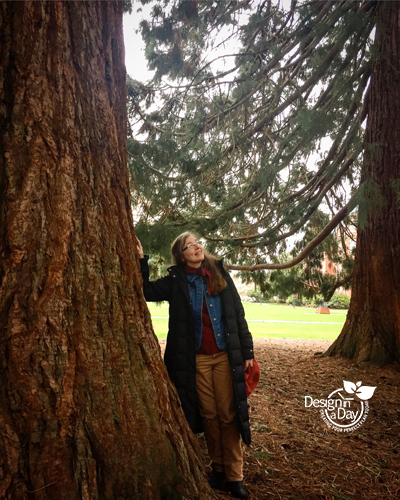
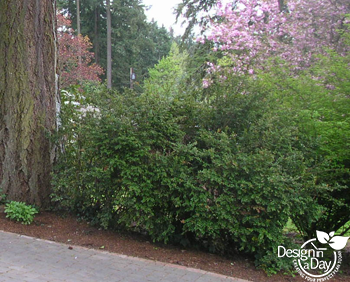
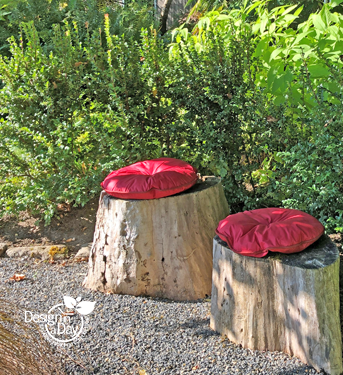
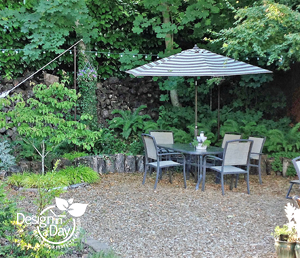 Views over the fence included other neglected yards and they had a large (evil) tree of heaven that had to go. Many plants had died or looked leggy and sun starved.
Views over the fence included other neglected yards and they had a large (evil) tree of heaven that had to go. Many plants had died or looked leggy and sun starved.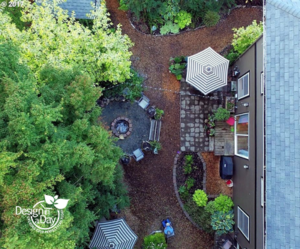 Selecting low water plants
Selecting low water plants